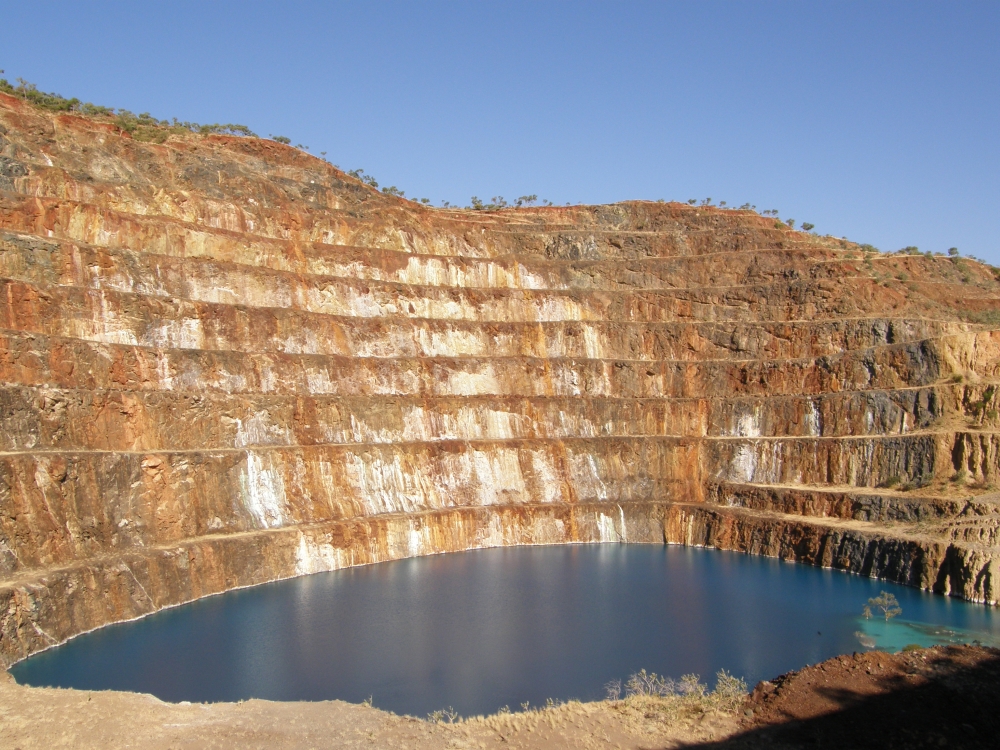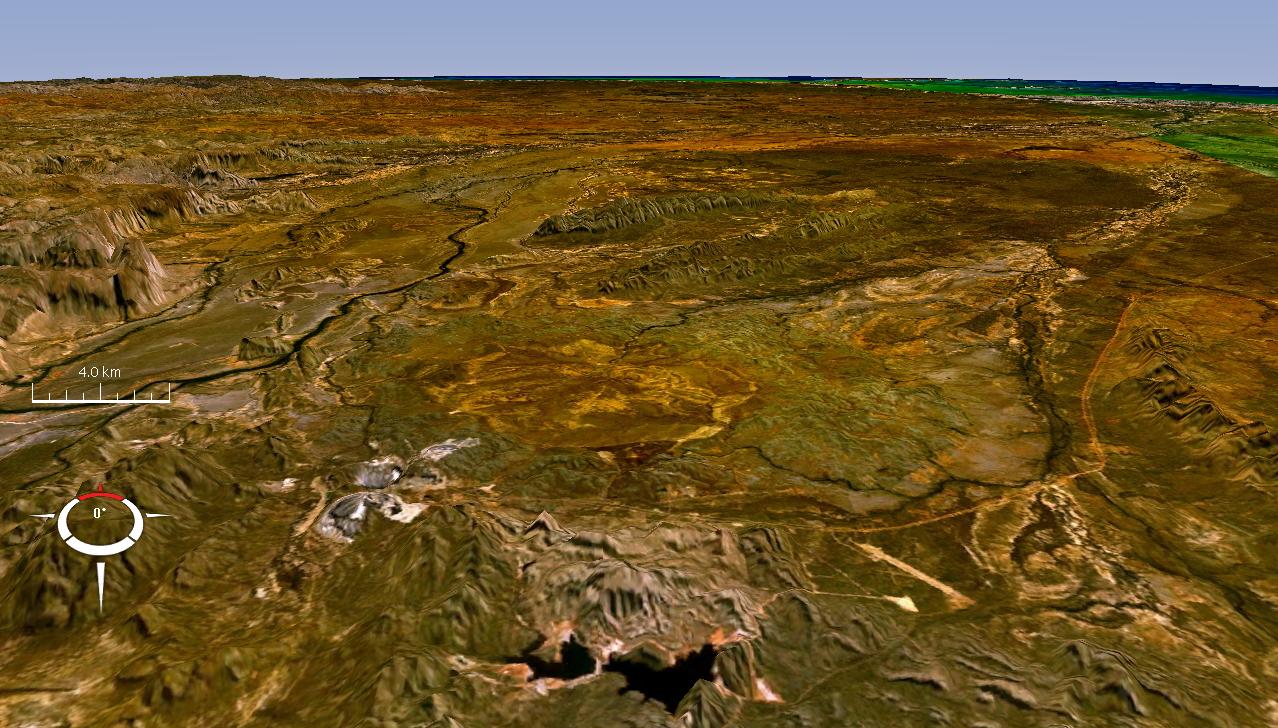|
East Leichhardt Dam
East Leichhardt Dam is a dam built in 1961 on the East Leichhardt River which impounds Lake Mary Kathleen, Queensland. The dam is located 25 km east of Mount Isa, Queensland, and 9 km south of the Barkly Highway. The dam was built to be an emergency supply of water for the now-closed Mary Kathleen uranium mine. However, Lake Corella was sufficient. The dam has a capacity of 12,100 megalitres. See also *List of dams and reservoirs in Australia Dams and reservoirs in Australia is a link page for any dam or reservoir in Australia. Australian Capital Territory There are three key water storage facilities located in the Australian Capital Territory. The fourth source of water for Canb ... References External linksEast Leichardt Dam / Mary Kathleen Information page Reservoirs in Queensland North West Queensland Dams in Queensland {{Australia-dam-stub ... [...More Info...] [...Related Items...] OR: [Wikipedia] [Google] [Baidu] |
Mount Isa
Mount Isa ( ) is a city in the Gulf Country region of Queensland, Australia. It came into existence because of the vast mineral deposits found in the area. Mount Isa Mines (MIM) is one of the most productive single mines in world history, based on combined production of lead, silver, copper and zinc. With an urban population of 18,727 in 2021 census, Mount Isa is the administrative, commercial and industrial centre for the state's vast north-western region. Although situated in an arid area, the artificial Lake Moondarra north of the city on the Leichhardt River provides both drinking water and an area for watersports, birdwatching and recreation. Locals often refer to Mount Isa as "The Isa". Due to the lead production in the city, Mount Isa has one of the most intensive air quality monitoring systems in Australia. Concerns have been raised over childhood lead contamination and air pollution within the city. The Mount Isa Mines (MIM) in particular are a source of signi ... [...More Info...] [...Related Items...] OR: [Wikipedia] [Google] [Baidu] |
Reservoir
A reservoir (; from French ''réservoir'' ) is an enlarged lake behind a dam. Such a dam may be either artificial, built to store fresh water or it may be a natural formation. Reservoirs can be created in a number of ways, including controlling a watercourse that drains an existing body of water, interrupting a watercourse to form an embayment within it, through excavation, or building any number of retaining walls or levees. In other contexts, "reservoirs" may refer to storage spaces for various fluids; they may hold liquids or gasses, including hydrocarbons. ''Tank reservoirs'' store these in ground-level, elevated, or buried tanks. Tank reservoirs for water are also called cisterns. Most underground reservoirs are used to store liquids, principally either water or petroleum. Types Dammed valleys Dammed reservoirs are artificial lakes created and controlled by a dam constructed across a valley, and rely on the natural topography to provide most of the basin ... [...More Info...] [...Related Items...] OR: [Wikipedia] [Google] [Baidu] |
Mary Kathleen, Queensland
Mary Kathleen was a mining settlement in north-western Queensland, Australia. It is located in the Selwyn Range between Mount Isa and Cloncurry. History Mary Kathleen was first settled during the 1860s. Uranium was first discovered at Mary Kathleen by Clem Walton and Norm McConachy in 1954: the deposit and the township was named after the late wife of McConachy. Prospecting and exploitation rights were subsequently on-sold, and in 1955 Rio Tinto Mining formed Mary Kathleen Uranium Ltd to develop a mine and service town. An architect-designed town grew during 1956-58, with reticulated water from a dam, Lake Corella. St Peter's Catholic Church was built in 1958. After the town closed, the church building was relocated to be a shelter shed at Saint Joseph’s Catholic School in Mount Isa. Uranium mine In 1954, a significant uranium deposit was discovered at the site (20.7470°S, 140.0123°E). A sales contract with the United Kingdom Atomic Energy Authority was signed in 1956 ... [...More Info...] [...Related Items...] OR: [Wikipedia] [Google] [Baidu] |
Queensland
) , nickname = Sunshine State , image_map = Queensland in Australia.svg , map_caption = Location of Queensland in Australia , subdivision_type = Country , subdivision_name = Australia , established_title = Before federation , established_date = Colony of Queensland , established_title2 = Separation from New South Wales , established_date2 = 6 June 1859 , established_title3 = Federation of Australia, Federation , established_date3 = 1 January 1901 , named_for = Queen Victoria , demonym = , capital = Brisbane , largest_city = capital , coordinates = , admin_center_type = Administration , admin_center = Local government areas of Queensland, 77 local government areas , leader_title1 = Monarchy of Australia, Monarch , leader_name1 = Charles III , leader_title2 = Governor of Queensland, Governor , leader_name2 = Jeannette Young , leader_title3 = Premier of Queensland, Premier , leader_name3 = Annastacia Palaszczuk (Australian Labor Party (Queensland Branch), AL ... [...More Info...] [...Related Items...] OR: [Wikipedia] [Google] [Baidu] |
Barkly Highway
The Barkly Highway is a national highway of both Queensland and the Northern Territory in Australia. It is the only sealed road between Queensland and the Northern Territory. Description The highway runs between Cloncurry and the junction with the Stuart Highway north of Tennant Creek, known as the "Threeways". The entire highway is part of the National Highway system: in the Northern Territory it is assigned National Route 66; the Queensland portion is designated as National Route A2. The Northern Territory section has a speed limit of along most of its length. It is the main transport route between Queensland and the Northern Territory, consequently many road trains use it. Upgrades An upgrade of the Queensland section of the highway between Mount Isa and Camooweal was completed in 2008 and despite floods of 2009, 2010 and 2011, the Queensland sections of road were in good condition (as of 2015). The Northern Australia Roads Program announced in 2016 included the ... [...More Info...] [...Related Items...] OR: [Wikipedia] [Google] [Baidu] |
Corella Dam
Lake Corella is a concrete faced rockfill dam on the Corella River built between 1956 and 1957 to provide town water for the Mary Kathleen Uranium Mine. The dam originally had a gated control structure which was removed in 2004, lowering the spillway and reducing the full supply level. When full it has a surface area of 200 hectares and holds 10,500 ML of water. Clem Walton Park is a popular camping area on the shore of the lake. See also *List of dams and reservoirs in Australia Dams and reservoirs in Australia is a link page for any dam or reservoir in Australia. Australian Capital Territory There are three key water storage facilities located in the Australian Capital Territory. The fourth source of water for Canb ... Corella Lake North West Queensland Dams completed in 1959 Dams in Queensland {{Australia-dam-stub ... [...More Info...] [...Related Items...] OR: [Wikipedia] [Google] [Baidu] |
List Of Dams And Reservoirs In Australia
Dams and reservoirs in Australia is a link page for any dam or reservoir in Australia. Australian Capital Territory There are three key water storage facilities located in the Australian Capital Territory. The fourth source of water for Canberra, Googong Dam, is in NSW. In addition, there are four smaller man-made reservoirs used for recreation and as traps for sediment and fertilizers . New South Wales There are dams, weirs, catchments, and barrages in New South Wales. Of these, 135 facilities are considered major dams according to the Australian National Committee on Large Dams. Dams and reservoirs The largest reservoir in New South Wales is the Lake Eucumbene in the Snowy Mountains, formed by the Eucumbene Dam. Weirs and barrages Cancelled and decommissioned Northern Territory There are 805 named water storage facilities located in the Northern Territory. Of these, four facilities are considered major dams according to the Australian National Committee on ... [...More Info...] [...Related Items...] OR: [Wikipedia] [Google] [Baidu] |
Reservoirs In Queensland
A reservoir (; from French ''réservoir'' ) is an enlarged lake behind a dam. Such a dam may be either artificial, built to store fresh water or it may be a natural formation. Reservoirs can be created in a number of ways, including controlling a watercourse that drains an existing body of water, interrupting a watercourse to form an embayment within it, through excavation, or building any number of retaining walls or levees. In other contexts, "reservoirs" may refer to storage spaces for various fluids; they may hold liquids or gasses, including hydrocarbons. ''Tank reservoirs'' store these in ground-level, elevated, or buried tanks. Tank reservoirs for water are also called cisterns. Most underground reservoirs are used to store liquids, principally either water or petroleum. Types Dammed valleys Dammed reservoirs are artificial lakes created and controlled by a dam constructed across a valley, and rely on the natural topography to provide most of the basin of the ... [...More Info...] [...Related Items...] OR: [Wikipedia] [Google] [Baidu] |
North West Queensland
The Gulf Country is the region of woodland and savanna grassland surrounding the Gulf of Carpentaria in north western Queensland and eastern Northern Territory on the north coast of Australia. The region is also called the Gulf Savannah. It contains large reserves of zinc, lead and silver. The Gulf Country is crossed by the Savannah Way highway. Location and description The Gulf Country is a block of dry savanna between the wetter areas of Arnhem Land and the Top End of the Northern territory to the west and the Cape York Peninsula of Far North Queensland to the east, while to the south and east lie upland plains of Mitchell grasses and the Einasleigh Uplands. The Northern Territory side of the area is the Gulf Fall area of sandstone slopes and gorges draining the interior uplands into the gulf. The main land uses in the Gulf Country are beef cattle and mining. The region covers an area of . The landscape is generally flat and low-lying tropical savannah cut through with ... [...More Info...] [...Related Items...] OR: [Wikipedia] [Google] [Baidu] |




.png)


